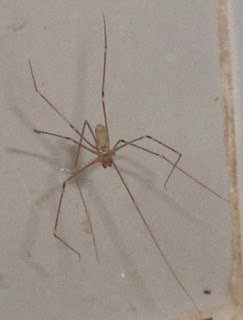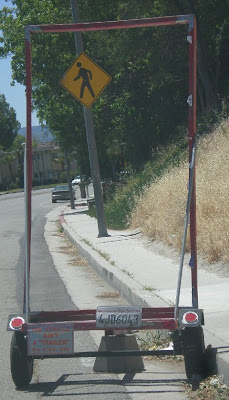 I photographed these daddy long-legs spiders (Pholcus phalangioides) in the women's restroom of the horticulture building at Pierce College. They seemed cozy, moving around their web in the narrow space between the side of the toilet and the wall. I photographed these daddy long-legs spiders (Pholcus phalangioides) in the women's restroom of the horticulture building at Pierce College. They seemed cozy, moving around their web in the narrow space between the side of the toilet and the wall.It's a good thing I'm not afraid of spiders, but this might explain why this restroom, unlike all the others on campus, seemed so clean. (Well, except for the part with the spiders.) No one dares use it. Apparently the Plant Facilities department has not yet issued brooms to this remote outpost. |
 Usually found in or around houses, the daddy long-legs is sometimes also called the cellar spider. (It is occasionally confused with a couple of other species that are also sometimes called long-legs or daddy long-legs.) They like to hang upside down from their webs and wait for prey. They eat small insects and spiders. When food is short, they will eat their own kind.
Usually found in or around houses, the daddy long-legs is sometimes also called the cellar spider. (It is occasionally confused with a couple of other species that are also sometimes called long-legs or daddy long-legs.) They like to hang upside down from their webs and wait for prey. They eat small insects and spiders. When food is short, they will eat their own kind.
 Last night someone informed me that the
Last night someone informed me that the 


